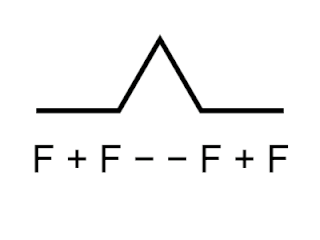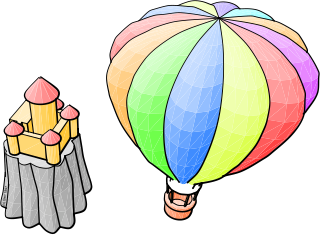
Ada is a structured, statically typed, imperative, and object-oriented high-level programming language, extended from Pascal and other languages. It has built-in language support for design by contract (DbC), extremely strong typing, explicit concurrency, tasks, synchronous message passing, protected objects, and non-determinism. Ada improves code safety and maintainability by using the compiler to find errors in favor of runtime errors. Ada is an international technical standard, jointly defined by the International Organization for Standardization (ISO), and the International Electrotechnical Commission (IEC). As of 2020, the standard, called Ada 2012 informally, is ISO/IEC 8652:2012.

Alan Curtis Kay is an American computer scientist best known for his pioneering work on object-oriented programming and windowing graphical user interface (GUI) design. At Xerox PARC he led the design and development of the first modern windowed computer desktop interface. There he also led the development of the influential object-oriented programming language Smalltalk, both personally designing most of the early versions of the language and coining the term "object-oriented." He has been elected a Fellow of the American Academy of Arts and Sciences, the National Academy of Engineering, and the Royal Society of Arts. He received the Turing award in 2003.
In object-oriented programming, a class is an extensible program-code-template for creating objects, providing initial values for state and implementations of behavior. In many languages, the class name is used as the name for the class, the name for the default constructor of the class, and as the type of objects generated by instantiating the class; these distinct concepts are easily conflated. Although, to the point of conflation, one could argue that is a feature inherent in a language because of its polymorphic nature and why these languages are so powerful, dynamic and adaptable for use compared to languages without polymorphism present. Thus they can model dynamic systems more easily.

Logo is an educational programming language, designed in 1967 by Wally Feurzeig, Seymour Papert, and Cynthia Solomon. Logo is not an acronym: the name was coined by Feurzeig while he was at Bolt, Beranek and Newman, and derives from the Greek logos, meaning word or thought.

Smalltalk is an object-oriented, dynamically typed reflective programming language. It was designed and created in part for educational use, specifically for constructionist learning, at the Learning Research Group (LRG) of Xerox PARC by Alan Kay, Dan Ingalls, Adele Goldberg, Ted Kaehler, Diana Merry, Scott Wallace, and others during the 1970s.
Prototype-based programming is a style of object-oriented programming in which behaviour reuse is performed via a process of reusing existing objects that serve as prototypes. This model can also be known as prototypal, prototype-oriented,classless, or instance-based programming.

An object–relational database (ORD), or object–relational database management system (ORDBMS), is a database management system (DBMS) similar to a relational database, but with an object-oriented database model: objects, classes and inheritance are directly supported in database schemas and in the query language. In addition, just as with pure relational systems, it supports extension of the data model with custom data types and methods.
In object-oriented programming (OOP), encapsulation refers to the bundling of data with the methods that operate on that data, or the restricting of direct access to some of an object's components. Encapsulation is used to hide the values or state of a structured data object inside a class, preventing direct access to them by clients in a way that could expose hidden implementation details or violate state invariance maintained by the methods.
A domain-specific language (DSL) is a computer language specialized to a particular application domain. This is in contrast to a general-purpose language (GPL), which is broadly applicable across domains. There are a wide variety of DSLs, ranging from widely used languages for common domains, such as HTML for web pages, down to languages used by only one or a few pieces of software, such as MUSH soft code. DSLs can be further subdivided by the kind of language, and include domain-specific markup languages, domain-specific modeling languages, and domain-specific programming languages. Special-purpose computer languages have always existed in the computer age, but the term "domain-specific language" has become more popular due to the rise of domain-specific modeling. Simpler DSLs, particularly ones used by a single application, are sometimes informally called mini-languages.
In computer science, a metaobject is an object that manipulates, creates, describes, or implements objects. The object that the metaobject pertains to is called the base object. Some information that a metaobject might define includes the base object's type, interface, class, methods, attributes, parse tree, etc. Metaobjects are examples of the computer science concept of reflection, where a system has access to its own internal structure. Reflection enables a system to essentially rewrite itself on the fly, to alter its own implementation as it executes.
Object Pascal is an extension to the programming language Pascal that provides object-oriented programming (OOP) features such as classes and methods.
SIGPLAN is the Association for Computing Machinery's Special Interest Group on programming languages.
In computer programming, a runtime system or runtime environment is a sub-system that exists both in the computer where a program is created, as well as in the computers where the program is intended to be run. The name comes from the compile time and runtime division from compiled languages, which similarly distinguishes the computer processes involved in the creation of a program (compilation) and its execution in the target machine.

Programming language theory (PLT) is a branch of computer science that deals with the design, implementation, analysis, characterization, and classification of formal languages known as programming languages. Programming language theory is closely related to other fields including mathematics, software engineering, and linguistics. There are a number of academic conferences and journals in the area.
Etoys is a child-friendly computer environment and object-oriented prototype-based programming language for use in education.
Daniel L. Weinreb was an American computer scientist and programmer, with significant work in the environment of the programming language Lisp.
Data, context, and interaction (DCI) is a paradigm used in computer software to program systems of communicating objects. Its goals are:
Object-oriented programming (OOP) is a programming paradigm based on the concept of "objects", which can contain data and code: data in the form of fields, and code, in the form of procedures.
Objective-C is a general-purpose, object-oriented programming language that adds Smalltalk-style messaging to the C programming language. Originally developed by Brad Cox and Tom Love in the early 1980s, it was selected by NeXT for its NeXTSTEP operating system. Objective-C was the standard programming language supported by Apple for developing macOS and iOS applications using their respective application programming interfaces (APIs), Cocoa and Cocoa Touch, until the introduction of Swift in 2014.
OMeta is a specialized object-oriented programming language for pattern matching, developed by Alessandro Warth and Ian Piumarta in 2007 under the Viewpoints Research Institute. The language is based on Parsing Expression Grammars (PEGs) rather than Context-Free Grammars with the intent of providing "a natural and convenient way for programmers to implement tokenizers, parsers, visitors, and tree-transformers".





